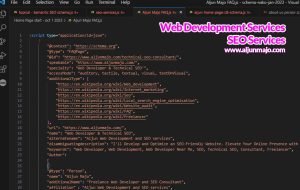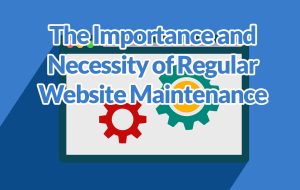Essential Web Development Tools And Technologies For 2023

It’s 2023, and web development has come a long way since its inception. With the rapid advancements in technology, developers now have many tools and technologies at their disposal to create stunning websites and applications.
As we delve into the world of web development, it’s vital to stay updated with the latest trends and essential tools that can make our lives easier. In this article, I’ll introduce you to some indispensable web development tools and technologies you should know about in 2023.
Whether you’re a seasoned pro or just starting your journey into web development, there’s always something new to learn. From front-end frameworks to back-end programming languages, I’ve got you covered with all the latest information on what’s hot in 2023.
So buckle up and get ready for an exciting ride through the world of cutting-edge web development tools and technologies!
Table of Contents
Frontend Development Frameworks And Libraries
In the realm of front-end development, frameworks and libraries play a crucial role in shaping web applications that are visually appealing, efficient, and easy to maintain.
The year 2023 will continue to be increasingly important for responsive design as more users access websites from various devices with different screen sizes.
Some of the essential frontend development frameworks and libraries include React, Angular, Vue.js, and Svelte, which offer developers ready-to-use UI components to create seamless user interfaces.
Animation libraries also significantly enhance the user experience on web applications. They allow developers to incorporate interactive elements and create engaging designs that capture users’ attention.
Popular animation libraries such as GreenSock (GSAP), Anime.js, and Three.js are expected to remain relevant in 2023. These libraries enable smooth animations while maintaining optimal performance on various devices.
Mobile frameworks have become indispensable for creating mobile-friendly websites or hybrid applications that cater to the increasing number of smartphone users worldwide. Frameworks like Ionic or React Native provide developers with powerful tools for building mobile apps compatible with multiple platforms using a single codebase.
Additionally, accessibility tools should not be overlooked as they ensure that web applications can be used by people with disabilities, thereby promoting inclusivity in the digital world.
By integrating these technologies into their projects, developers can stay ahead of the curve and build future-proof web applications in 2023.
Backend Technologies And Platforms
Now that I’ve delved into essential web development tools and technologies let’s dive into the fascinating world of backend technologies and platforms. These crucial components are what power your applications behind the scenes, ensuring seamless performance and an engaging user experience.
As we move towards 2023, developers must stay ahead of the curve by adopting cutting-edge solutions for their backend infrastructure. Scalable databases have become a must-have for modern web applications, as they provide the foundation for rapidly storing and retrieving vast amounts of data.
Serverless architectures are also gaining popularity due to their cost-efficiency and scalability, enabling developers to focus on writing code without worrying about maintaining servers. Containerization tools play an important role in simplifying deployment processes while enhancing security and resource utilization.
Furthermore, API management has emerged as a crucial aspect of backend development, allowing teams to design, secure, monitor, and publish APIs effectively. Embracing microservices patterns enables a more modular approach to building applications, which can significantly improve maintainability and flexibility in the long run.
As we venture deeper into this new era of web development, it’s essential that professionals adapt to these innovative backend technologies and platforms. By leveraging scalable databases, serverless architectures, containerization tools, API management strategies, and microservices patterns in your projects you will be well-equipped for success in 2023 and beyond.
The landscape of web development is constantly evolving; staying informed about these advancements will benefit your career and ensure that your creations stand out in a competitive market.
Code Editors And Integrated Development Environments (Ides)
Code customization plays a significant role in web development, allowing developers to tailor their coding environment according to their preferences and needs. This is where code editors and Integrated Development Environments (IDEs) come into the picture.
These tools provide an efficient platform for writing, editing, and organizing code while offering various features such as syntax highlighting auto-completion, and debugging assistance.
Editor efficiency is crucial in today’s fast-paced web development landscape, significantly impacting a developer’s productivity. Syntax highlighting is one feature that increases editor efficiency by visually distinguishing different elements of the code – such as keywords, comments, and variables – using a variety of colors or font styles. This not only enhances readability but also helps developers identify errors more quickly.
Debugging assistance is another essential feature that simplifies the process of identifying and resolving issues within the code by providing real-time error detection and suggestions for fixes.
As web development projects grow in complexity, IDE collaboration becomes increasingly important. Modern IDEs facilitate seamless collaboration among team members by providing features like real-time code sharing, version control integration, and live chat functionalities. This enables developers to work together on projects effectively while ensuring everyone stays updated with the latest changes made to the codebase.
With an ever-evolving tech landscape, we can expect even more advanced features to be incorporated into future IDEs and code editors, making them indispensable tools for web developers in 2023 and beyond.
Version Control And Collaboration Tools
Having explored the realm of code editors and integrated development environments, it’s time to delve into another crucial aspect of web development: version control and collaboration tools. These tools are indispensable for developers working in teams or even individually, as they help manage changes to codebases, enhance collaboration among team members, and streamline project workflows.
Git has undeniably become the industry standard among numerous version control systems available today. Being well-versed in Git essentials such as committing changes, branching, merging, and managing repositories is essential.
Alongside Git, platforms like GitHub and BitBucket offer centralized spaces to host your repositories while providing additional features like issue tracking and project management. For instance, BitBucket basics include creating private repositories for small teams at no cost. Regardless of the platform you choose, understanding how to manage pull requests and resolve merge conflicts is vital for smooth collaboration within your team.
As web development projects grow in size and complexity, having a standardized workflow becomes increasingly important. This is where GitHub workflows come into play. By using GitHub Actions – a feature that allows automating various parts of the development process – developers can create a custom continuous integration (CI) and continuous deployment (CD) pipelines tailored to their specific needs.
Embracing these tools will increase your efficiency and reduce errors introduced during manual processes. Therefore, mastering version control systems like Git and collaborative platforms like GitHub or BitBucket should be on your list when preparing for web development in 2023.
Testing, Debugging, And Performance Optimization Tools
When diving into the web development world, having a solid arsenal of testing, debugging, and performance optimization tools is crucial. Visualize yourself as an artist with a diverse palette of colors and brushes, equipped to craft a seamless and engaging user experience across various devices and browsers.
By adopting automated testing tools, cross-browser debugging techniques, load testing strategies, A/B testing methods, and accessibility evaluation tools, you can ensure your masterpiece is visually stunning and functionally robust.
Automated testing tools are essential for validating code functionality across different platforms while minimizing human error. They enable developers to write test cases in advance and run them automatically during development or deployment stages. This approach saves time and resources while ensuring that core features work correctly before going live.
Cross-browser debugging further enhances this process by identifying inconsistencies in how your website appears or functions across different browsers. By addressing any discrepancies early in the process, you can ensure a consistent user experience.
Performance optimization is another critical aspect of creating an efficient and enjoyable online user experience. Load testing strategies help identify bottlenecks within your application by simulating high-traffic conditions to evaluate how well it performs under pressure. This information enables developers to optimize their code accordingly to improve overall performance.
A/B testing methods allow you to compare two or more variations of a design element or feature to determine which version resonates best with your target audience. Additionally, accessibility evaluation tools play an integral role in ensuring that your website is inclusive for users with disabilities by identifying areas where improvements can be made to enhance usability for all visitors.
By incorporating these essential web development technologies into your toolkit, you’ll be well-prepared to create innovative digital experiences that stand the test of time.
Frequently Asked Questions
How Can I Ensure That My Web Development Skills Stay Up-To-Date With The Latest Trends And Technologies In The Industry?
To ensure your web development skills stay up-to-date with the latest trends and technologies in the industry, it’s crucial to focus on future-proofing skills by actively learning and adapting to new developments. Stay informed about emerging languages, frameworks, and libraries as they gain traction within the developer community. Additionally, keep an eye on the increasing role of AI in web development for automation, optimization, and personalization purposes. Familiarize yourself with decentralized applications (DApps) built on blockchain technology as this area grows exponentially.
Lastly, prioritize cross-platform development to create seamless user experiences across various devices and operating systems. Engaging in continuous learning and embracing innovation will help you remain relevant in an ever-changing industry.
What Resources Are Available For Learning And Mastering These Essential Web Development Tools And Technologies?
To stay current with the latest web development tools and technologies, numerous resources are available for learning and mastering these skills.
You can listen to web development podcasts featuring industry experts discussing trends and best practices, use code collaboration platforms for team-based learning and real-time feedback, enroll in virtual boot camps that offer immersive training experiences, work through interactive tutorials designed to build your expertise step-by-step and contribute to open source projects where you can apply your knowledge while learning from experienced developers.
These resources provide diverse opportunities for continuous growth in the ever-evolving world of web development.
Are There Any Recommended Online Communities Or Forums Where Web Developers Can Discuss And Share Knowledge About These Tools And Technologies?
Numerous web development forums and community recommendations are available for web developers to engage with their peers, discuss tools and technologies, and share knowledge. Some popular options include Stack Overflow, GitHub discussions, Reddit’s web dev, and technology discussion platforms like Dev.to or Hashnode.
Additionally, many tool-specific groups on social media platforms like Facebook or LinkedIn cater to specific frameworks or libraries. Online developer meetups through platforms like Meetup.com can also provide opportunities for learning and networking in web development.
How Do I Choose The Best Combination Of Tools And Technologies For A Specific Web Development Project Based On Its Unique Requirements And Constraints?
When choosing the best combination of tools and technologies for a specific web development project, it’s crucial to consider the unique requirements and constraints of the project. Factors such as project management, responsive design, performance optimization, security measures, and accessibility standards should all be considered.
By thoroughly assessing these factors, you can select the most suitable tools and technologies that will not only meet your client’s needs but also ensure a smooth development process and an exceptional end result. As each project is unique, remember that there isn’t a one-size-fits-all solution; instead, tailor your choices best to fit the demands of the specific project at hand.
Are There Any Significant Differences Between The Tools And Technologies Recommended For Individual Freelancers Versus Those Used In Larger Web Development Teams Or Agencies?
Freelancer challenges often involve tackling multiple aspects of a project independently, while agency advantages typically benefit from a larger team with specialized roles. This distinction can impact the tools and technologies selected for web development projects.
For freelancers, ease of use, cost-effectiveness, and adaptability are important factors when choosing tools. On the other hand, agencies may prioritize collaboration tools that streamline communication and project management among team members.
Scalability considerations also come into play, as agencies might need to accommodate varied client requirements and adapt to different project sizes. Additionally, the recent shift toward remote work has increased the importance of cloud-based solutions supporting individual freelancers and distributed agency teams in staying connected and productive.
Conclusion
In conclusion, staying informed and adapting to the latest web development tools and technologies is crucial for your success as a developer. Engage in online communities, utilize learning resources, and be open to experimenting with different tools to find the best combination for your specific projects.
Remember, the tools and technologies you choose may vary based on whether you work individually or in a larger team. Stay flexible and curious, and watch your web development skills flourish in 2023 and beyond.


